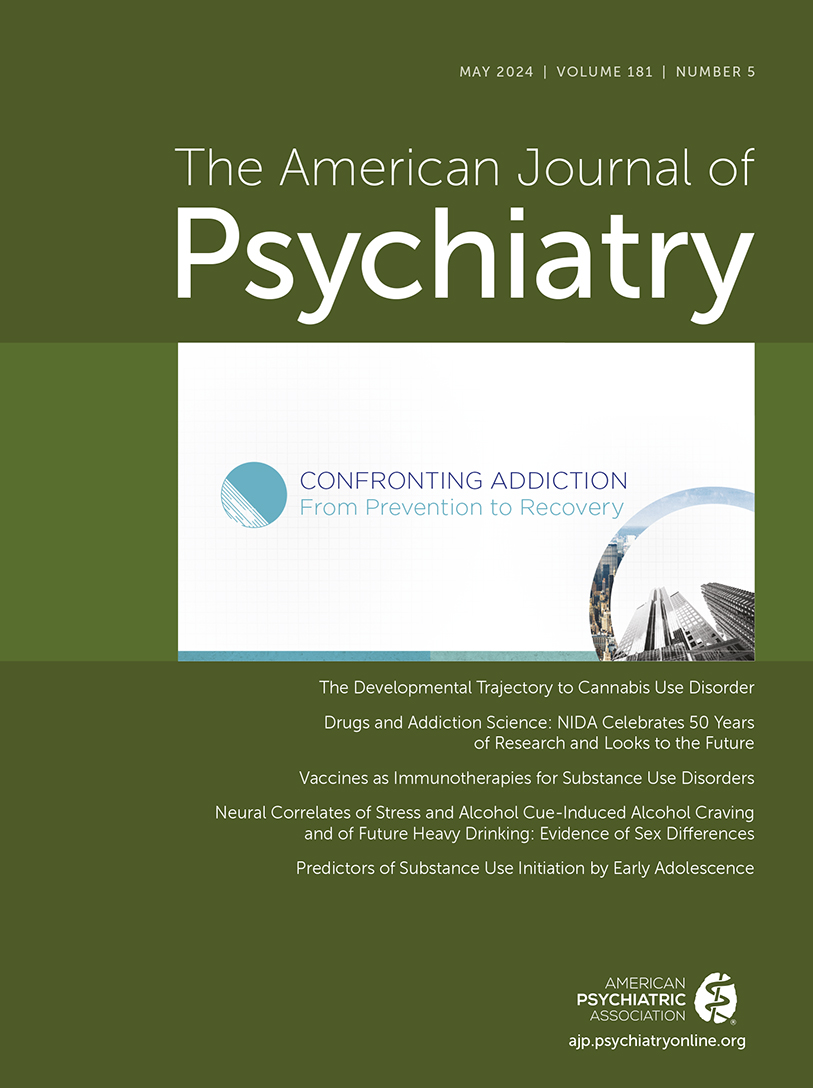Topiramate Versus Naltrexone for Alcohol Use Disorder: A Genotype-Stratified Double-Blind Randomized Controlled Trial
Abstract
Objective:
There have been no well-controlled and well-powered comparative trials of topiramate with other pharmacotherapies for alcohol use disorder (AUD), such as naltrexone. Moreover, the literature is mixed on the effects of two polymorphisms—rs2832407 (in GRIK1) and rs1799971 (in OPRM1)—on response to topiramate and naltrexone, respectively. The authors sought to examine the comparative effectiveness of topiramate and naltrexone in improving outcomes in AUD and to examine the role of the rs2832407 and rs1799971 polymorphisms, respectively, on response to these medications.
Methods:
In a 12-week, double-blind, placebo-controlled, randomized, multisite, genotype-stratified (rs2832407 and rs1799971) clinical trial comparing topiramate and naltrexone in treating AUD, 147 patients with AUD were randomly assigned to treatment with topiramate (maximum dosage of 200 mg/day) or naltrexone (50 mg/day), stratified by genotype (rs2832407*CC and *AC/AA genotypes and rs1799971*AA and *AG/GG genotypes). The predefined primary outcome was number of heavy drinking days (defined as ≥ four drinks for women, ≥ five drinks for men) per week. Predefined secondary outcomes included mean standard drinks per drinking day (SDDD) per week, body mass index (BMI), craving, markers of liver injury, mood, and adverse events.
Results:
For the number of heavy drinking days per week, there was a near-significant time-by-treatment interaction. For the number of standard drinks per drinking day per week, there was a significant time-by-treatment interaction, which favored topiramate. There were significant time-by-treatment effects, with greater reductions observed with topiramate than naltrexone for BMI, craving, and gamma-glutamyltransferase level. Withdrawal due to side effects occurred in 8% and 5% of the topiramate and naltrexone groups, respectively. Neither polymorphism showed an effect on treatment response.
Conclusions:
Topiramate is at least as effective and safe as the first-line medication, naltrexone, in reducing heavy alcohol consumption, and superior in reducing some clinical outcomes. Neither rs2832407 nor rs1799971 had effects on topiramate and naltrexone treatments, respectively.
Access content
To read the fulltext, please use one of the options below to sign in or purchase access.- Personal login
- Institutional Login
- Sign in via OpenAthens
- Register for access
-
Please login/register if you wish to pair your device and check access availability.
Not a subscriber?
PsychiatryOnline subscription options offer access to the DSM-5 library, books, journals, CME, and patient resources. This all-in-one virtual library provides psychiatrists and mental health professionals with key resources for diagnosis, treatment, research, and professional development.
Need more help? PsychiatryOnline Customer Service may be reached by emailing [email protected] or by calling 800-368-5777 (in the U.S.) or 703-907-7322 (outside the U.S.).



